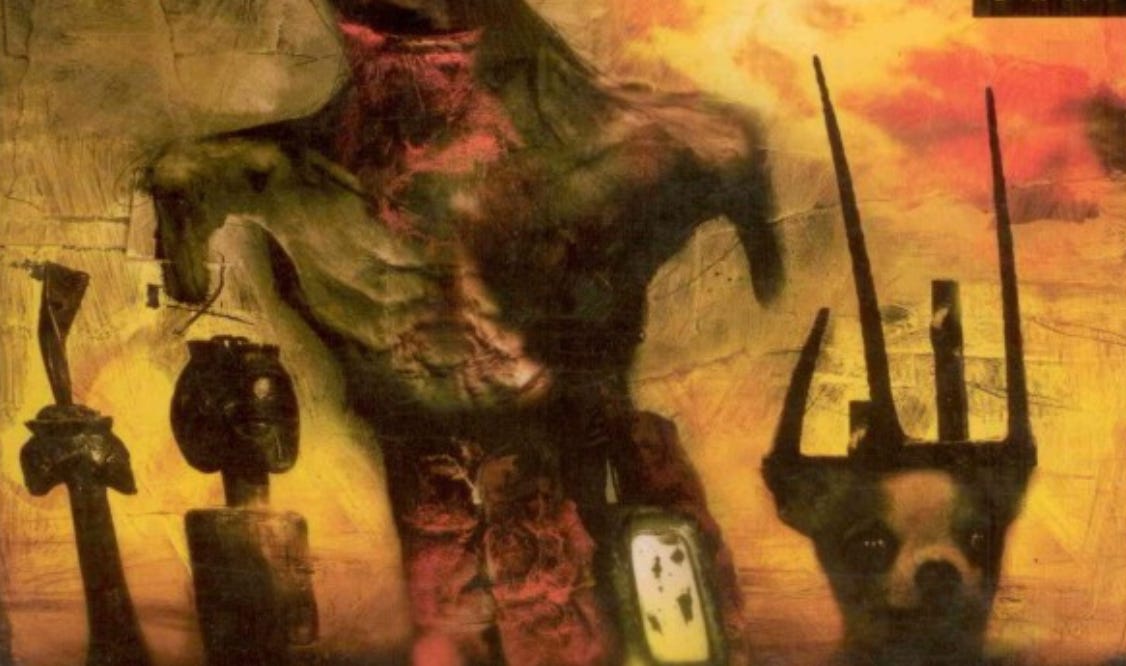Exit the Hive: Your Startup Uniform is a Straitjacket
BRAP
Let’s get this out of the way: you are not a founder. You are a cosplayer. And the most prestigious startup accelerator in the world is just a comically overpriced Comic-Con for people who think reading Marc Andreessen’s blog posts counts as intellectual development.
You’re living in a reality so meticulously curated it would make the Truman Show’s producers blush. It’s a world built not by idealistic hackers, but by a power-hungry priesthood of VCs who have more in common with CIA case officers than with engineers. Their real product isn’t technology; it’s a new kind of human—one perfectly engineered for the hive.
And if you want to see the endgame of this entire sick, sycophantic system, you don’t need to look at Zuck or Musk. …You need to look at Lucy Guo.
From Deep State Data to OnlyFans-Adjacent “Empowerment”: The Lucy Guo Story.
Let’s rewind the tape. Lucy Guo’s origin story is pure Silicon Valley canon. Thiel Fellow. Co-founder of Scale AI. For those who don’t know, Scale AI is not an app for finding the best avocado toast. It’s a crucial data-labeling company that provides the “eyes” for the Pentagon’s drones and the U.S. military’s artificial intelligence systems. It is, by any sane definition, deeply, fundamentally enmeshed with the military-industrial complex.
This is the “serious” tech. The real, grown-up, dual-use stuff that actually impacts global power dynamics. She wasn’t building a crypto-meowmeow-coin. She was building the plumbing for the deep state’s AI. And she won. She became a billionaire.
So, what does a billionaire technologist who has mastered the levers of state power do for an encore? Does she pour resources into fundamental AI safety research? Tackle a hard problem like climate modeling? Or perhaps, I don’t know, just buy an island and retire?
Think smaller. Think… thirstier.
Her next act of world-historical innovation was to launch Backseat, a content platform widely described as an “OnlyFans for investors.” Her public persona has since pivoted, with the grace of a falling brick, to that of a luxury-goods-flaunting, bikini-clad, fitness-influencing “icon.”
Let’s be very, very clear about what this means. This is not a judgment on her personal choices. This is a devastating indictment of the system that produced her.
The system took a formidable talent, funneled her through one of the most militarily significant AI companies on the planet, and the ultimate, highest-value output was… an Instagram feed.
She didn’t exit the game; she simply reached its final, logical boss: The Performance of the Self.
The technology was never the point. Scale AI was just the ticket, the credential, the thing that gave her the capital and the clout to launch her true life’s work: becoming a walking, talking, heavily-filtered brand asset. The “founder” was the cosplay; the influencer is the endgame. She is the living, breathing proof that in today’s Silicon Valley, the most scalable and lucrative product is your own ego.
The Rhizomatic Rat Race: Your Volunteer Stasi Program.
How does the system produce a Lucy Guo? It’s not an accident. It’s a deliberate, decentralized grooming process.
The philosopher Gilles Deleuze said modern power works not like a pyramid, but like a rhizome—a weed-like network that spreads invisibly, connecting your desire for a date to a new crypto-token. This is the prestige rat race. It’s a cover for angsty incels groomed in high school for a specific personality type.
The pipeline is a fiendish fusion of gamer and rave culture. It creates a matrix-like ecstatic environment where hedonism and status-seeking form a voluntary, MK-Ultra-like program. You’re not being waterboarded in a CIA black site; you’re just chasing clout and molly at a tech conference after-party. The effect is the same: a broken will, ready for reprogramming.
The goal is to create a person who has internalized the “spooks,” a concept from the anarchist philosopher Max Stirner. A “spook” is a fixed idea, a sacred cow that owns you.
Silicon Valley’s spooks are:
The Techno-Optimist Spook: You must worship at the altar of Marc Andreessen, the man whose crowning technological achievement was making hyperlinks blue. You must chant his “Techno-Optimist Manifesto” as if it’s holy scripture, all while ignoring that his fund’s real innovation is in financial engineering and narrative control.
The Effective Altruism Spook: You must justify your grotesque wealth accumulation with the solemn vow that you’re just “earning to give.” It’s the modern equivalent of the medieval church selling indulgences. Forge ahead, my son; your carbon-spewing private jet is forgiven because you’re hypothetically going to save a trillion people in the far future.
The Hustle Cult Spook: You must perform exhaustion. Your 100-hour weeks are the liturgical rites. Your burnout is a sacred stigmata.
This entire ecosystem is what George Orwell would recognize as a grammar of control. Words like “disruption,” “impact,” and “world-changing” have been hollowed out. They now mean: “We are extracting data and capital in a novel way that benefits existing power structures.”
From City College Outsiders to the New Elect: The Fraternity of Geniuses.
And here’s where the history gets spicy, because this didn’t spring from nothing. The modern tech oligarchy has a blueprint, and it wasn’t drawn up in a Sand Hill Road boardroom. It was forged in the crucible of mid-20th-century New York, among a very specific group of brilliant outsiders.
Before Y Combinator, there was a real-world, meritocratic rhizome. From the 1930s through the 1950s, City College of New York (CCNY) was a cauldron of intellectual ferment, populated by the children of Jewish immigrants excluded from the WASP-dominated Ivy League. Within this environment, two fraternities in particular became the incubators for a staggering concentration of future tech power: Tau Delta Phi and Sigma Alpha Mu (the “Sigma” fraternity).
This wasn’t about partying. This was a survival mechanism. These fraternities were the original decentralized networks for outsiders, forming a “fraternity of geniuses” where members taught each other, competed ferociously, and built the bonds that would define their careers.
Now, fast-forward a generation. Look at Qualcomm. Its founding CEO, Irwin Jacobs, was a brother of Sigma Alpha Mu at Cornell. His co-founder, Andrew Viterbi, was a brother of Tau Delta Phi at MIT.
This was the original decentralized network. They were the real “loser technologists”—brilliant kids shut out of the old-boy network, building their own. They didn’t have VCs; they had each other. They built world-changing technology from the ground up, driven by genius and a shared identity.
But here’s the tragic punchline: The outsider network becomes the new establishment.
The rhizome that once empowered the marginalized hardens into a new power center. The model of the CCNY fraternities—a tight, merit-based in-group—was perfected by the PayPal Mafia, replicated by the Thiel Fellowship, and industrialized by Y Combinator. The difference is that the original was a survival mechanism for outsiders. Today’s version is a grooming mechanism for the elite.
The Power Roster: The “Frat House” that Built Your World!
The influence of this network is almost comically vast. Beyond Jacobs and Viterbi, consider these brothers:
From Tau Delta Phi, Leonard Kleinrock: The internet pioneer who developed the mathematical theory of packet switching and helped send the first message over the ARPANET. A TDP brother from CCNY.
Robert Metcalfe: The inventor of Ethernet and founder of 3Com. A TDP brother at MIT.
From Sigma Alpha Mu, Charles Geschke: Co-founder of Adobe and the creator of the PDF and PostScript, which revolutionized desktop publishing. A Sigma from Carnegie Mellon.
Sterling Williams: Co-founder of Teradyne, a giant in semiconductor test and industrial automation.
This network didn’t just make a few chips. They built the foundational layers of the modern world: the internet (Kleinrock), local area networks (Metcalfe), digital documents (Geschke), and wireless communication (Jacobs, Viterbi). They are the absolute antithesis of the “cosplay founder”—they were engineers of profound, tangible, world-altering technology.
Y Combinator: The Ministry of Love for Aspiring Revolutionaries!
And where is this legacy co-opted? Where are the spooks implanted today? Look no further than Y Combinator.
YC is the ultimate rhizomatic node. It invokes Trotsky-like liberal tropes of perpetual revolution, but it’s actually a factory for postmodern, dishonest social engineering. They promise to help you “break things,” but only the things they tell you to break, and only in the precise, batch-approved way they dictate.
It’s a cutthroat, Stasi-like environment that runs on self-policing. No one needs to threaten you. You see the $20 million check go to the team that performs the “founder” cosplay best, and you internalize the rules instantly. You learn the buzzwords, you adopt the vest, you pitch the “TAM,” and you never, ever question whether you’re just a young kid cosplaying as a founder who is actually a tool in the cog of the social engineering machine.
The “innovation” that comes out isn’t about joy or curiosity—the core of the hacker ethic defined by Eric S. Raymond. It’s about running experiments to cybernetically engineer the perfect worker bee human for the hive of occultism and the cult of control.
The Black Pill is the Final Spook.
So here we are. It looks hopeless. It feels like a black pill.
But that feeling? That’s the final spook. The most insidious one of all.
The system wants you to believe it’s the only game in town. It wants you to think that to build, you must play its game, wear its uniform, and sell your soul for its fake prestige.
The path for the real technologist—the fucking loser technologist in the spirit of Eric S. Raymond—never went away. It just became incredibly, gloriously uncool. It exists in the garages, the basements, and the small, quiet teams building useful things without a PR strategy. It exists in the model of the original City College outsiders, before their legacy was co-opted.
Orwell told us that freedom is telling the truth. Deleuze told us to create new lines of flight outside the controlling rhizome. Raymond told us to build with joy and meritocratic rigor. Stirner told us to smash the spooks and own ourselves.
So ask yourself, cosplayer: Are you going to keep polishing your LinkedIn persona, hoping for a nod from the king rats? Or are you going to be a fucking loser and build something that actually matters?
The hive only has room for one. The cosplayers are all trying to become the next Lucy Guo.
The question is, will you be a bee, or will you be free?
When nothing is true, anything is possible.
-pe / -nj
11-5-2025






